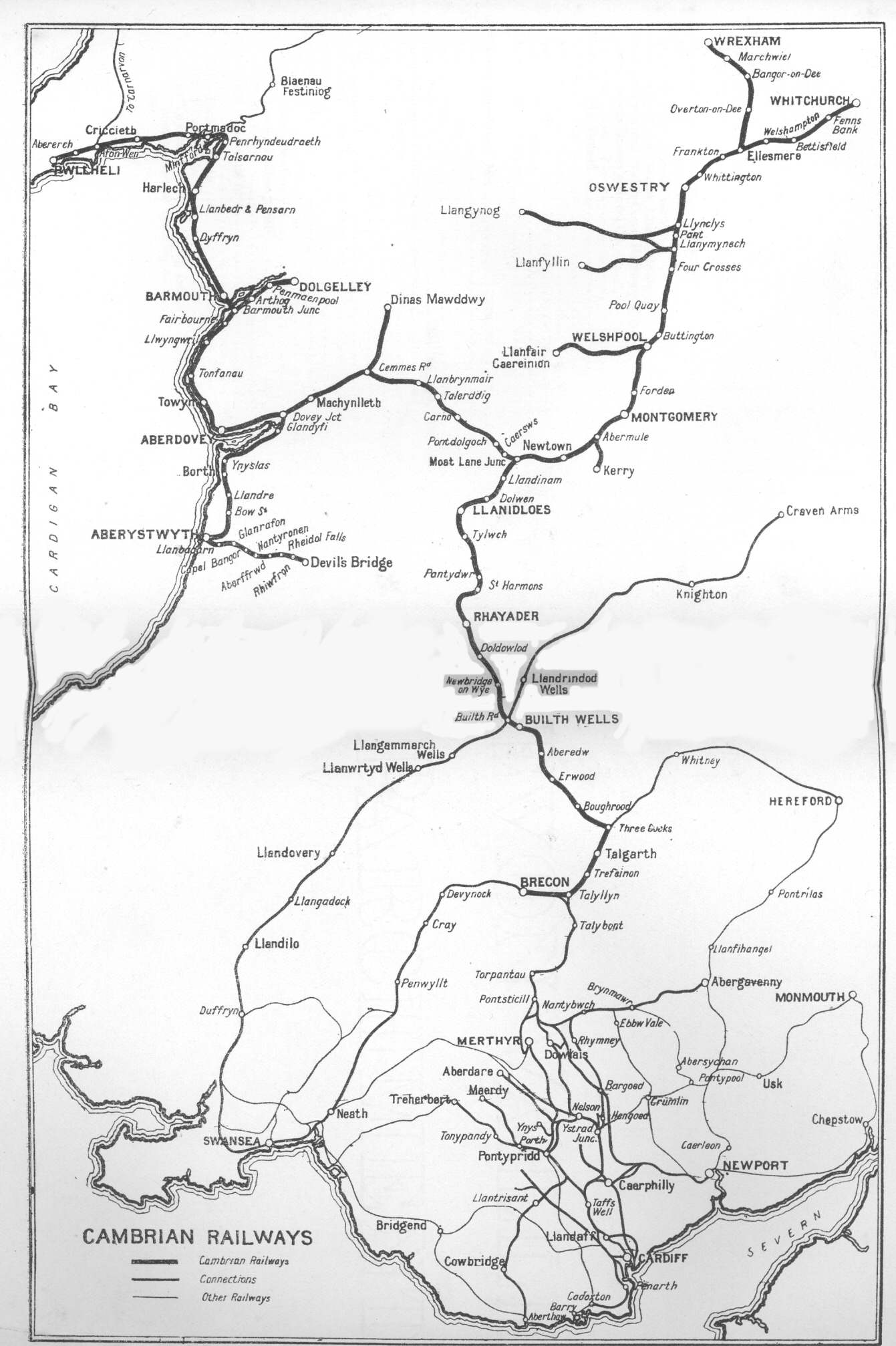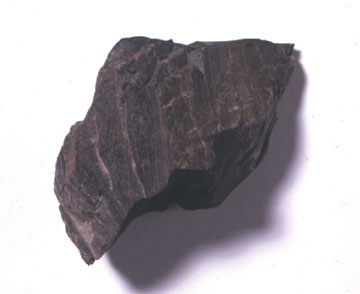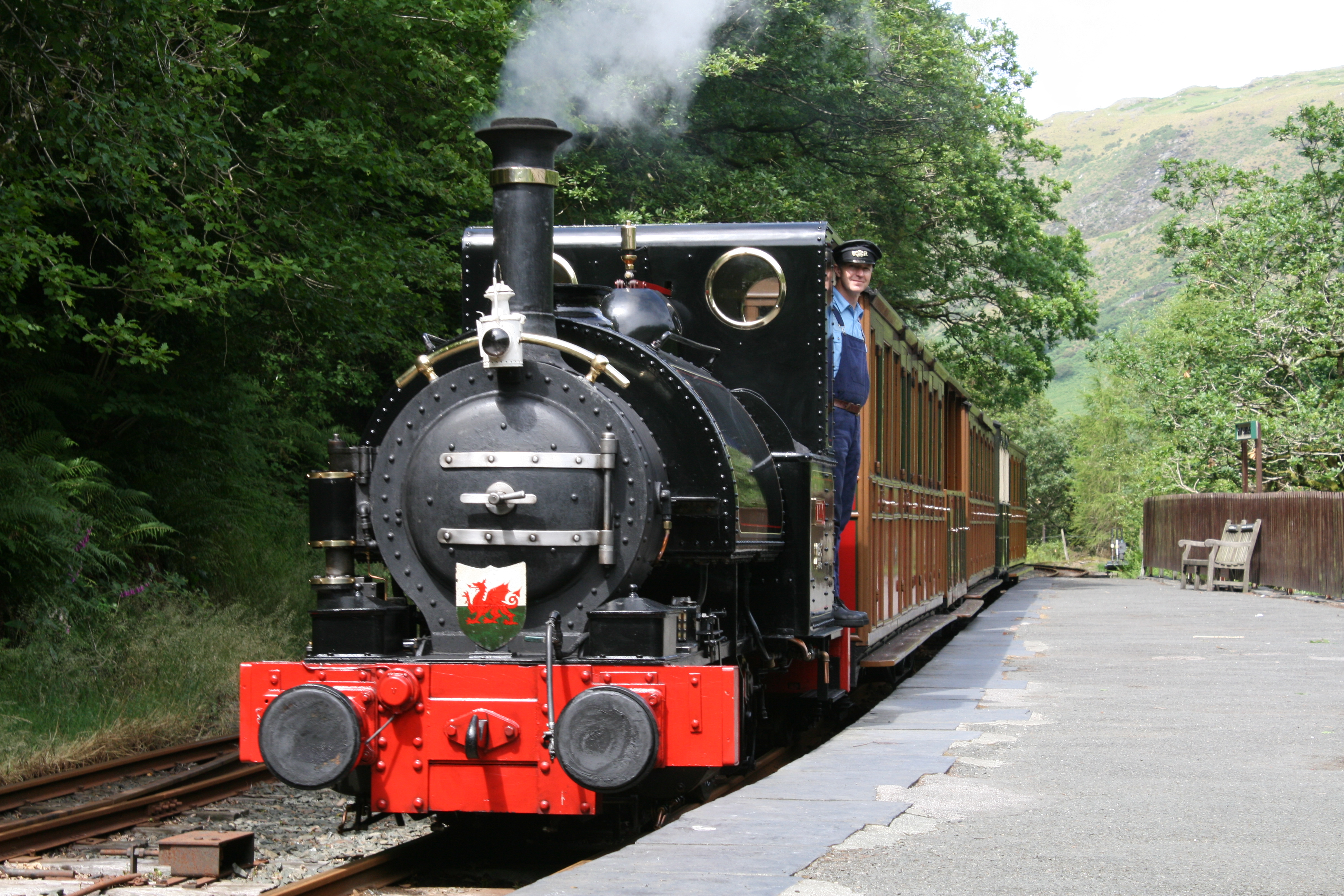|
Mawddwy Railway
The Mawddwy Railway was a rural line in the Dyfi Valley in mid-Wales that connected Dinas Mawddwy with a junction at railway station on the Newtown and Machynlleth Railway section of the Cambrian Railways. Despite being only 6 miles 63 chains (10.9 km) long, there were three intermediate stations at Cemmaes, Aberangell (where it linked to the Hendre-Ddu Tramway) and Mallwyd. History Slate quarrying: 1790s – 1865 Three parallel veins of OrdovicianRichards 1999 slate run through mid Wales. These veins surface at three locations – around Abergynolwyn in the west, surrounding Corris, and at their easternmost in the district around Dinas Mawddwy. Each of these locations has been a centre for slate quarrying, and Corris was the largest producer of the three. Slate quarrying at Dinas Mawddwy dates back to at least 1793. In 1839, the Minllen Slate and Slab Company was formed to work the quarry, but it went bankrupt in 1844. The main quarry was Minllyn quarry, a Narr ... [...More Info...] [...Related Items...] OR: [Wikipedia] [Google] [Baidu] |
Cambrian Railways
The Cambrian Railways owned of track over a large area of mid Wales. The system was an amalgamation of a number of railways that were incorporated in 1864, 1865 and 1904. The Cambrian connected with two larger railways with connections to the northwest of England via the London and North Western Railway, and the Great Western Railway for connections between London and Wales. The Cambrian Railways amalgamated with the Great Western Railway on 1 January 1922 as a result of the Railways Act 1921. The name is continued today in the route known as the Cambrian Line. History Creation of the Cambrian Railways: 1864 The Cambrian Railways Company was created on 25 July 1864 when the Cambrian Railways Act of Parliament received Royal Assent. The company was formed by amalgamating most of the railway companies in mid Wales: the Oswestry and Newtown Railway, the Llanidloes and Newtown Railway, the Newtown and Machynlleth Railway and the Oswestry, Ellesmere and Whitchurch Railway. The ... [...More Info...] [...Related Items...] OR: [Wikipedia] [Google] [Baidu] |
Slate Industry
The slate industry is the industry related to the extraction and processing of slate. Slate is either quarried from a ''slate quarry'' or reached by tunneling in a ''slate mine''. Common uses for slate include as a roofing material, a flooring material, gravestones and memorial tablets, and for electrical insulation. Slate mines are found around the world. 90% of Europe's natural slate used for roofing originates from the Slate Industry in Spain.European Association of Mining Industries website retrieved on 26/01/2010 The major slate mining region in the United Kingdom is ; in Co ... [...More Info...] [...Related Items...] OR: [Wikipedia] [Google] [Baidu] |
Talyllyn Railway
The Talyllyn Railway ( cy, Rheilffordd Talyllyn) is a narrow gauge preserved railway in Wales running for from Tywyn on the Mid-Wales coast to Nant Gwernol near the village of Abergynolwyn. The line was opened in 1865Drummond 2015, page 17 to carry slate from the quarries at Bryn Eglwys to Tywyn, and was the first narrow gauge railway in Britain authorised by Act of Parliament to carry passengers using steam haulage. Despite severe under-investment, the line remained open, and in 1951 it became the first railway in the world to be preserved as a heritage railway by volunteers. Since preservation, the railway has operated as a tourist attraction, expanding its rolling stock through acquisition and an engineering programme to build new locomotives and carriages. In 1976, an extension was opened along the former mineral line from Abergynolwyn to the new station at Nant Gwernol. In 2005 a major rebuilding and extension of Tywyn Wharf station took place, including a much-expand ... [...More Info...] [...Related Items...] OR: [Wikipedia] [Google] [Baidu] |
Common Carrier
A common carrier in common law countries (corresponding to a public carrier in some civil law systems,Encyclopædia Britannica CD 2000 "Civil-law public carrier" from "carriage of goods" usually called simply a ''carrier'') is a person or company that transports goods or people for any person or company and is responsible for any possible loss of the goods during transport.Longman Business English Dictionary A common carrier offers its services to the general public under license or authority provided by a regulatory body, which has usually been granted "ministerial authority" by the legislation that created it. The regulatory body may create, interpret, and enforce its regulations upon the common carrier (subject to judicial review) with independence and finality as long as it acts within the bounds of the enabling legislation. A common carrier (also called a ''public carrier'' in British English) is distinguished from a contract carrier, which is a carrier that transports go ... [...More Info...] [...Related Items...] OR: [Wikipedia] [Google] [Baidu] |
Baronet
A baronet ( or ; abbreviated Bart or Bt) or the female equivalent, a baronetess (, , or ; abbreviation Btss), is the holder of a baronetcy, a hereditary title awarded by the British Crown. The title of baronet is mentioned as early as the 14th century, however in its current usage was created by James I of England in 1611 as a means of raising funds for the crown. A baronetcy is the only British hereditary honour that is not a peerage, with the exception of the Anglo-Irish Black Knights, White Knights, and Green Knights (of whom only the Green Knights are extant). A baronet is addressed as "Sir" (just as is a knight) or "Dame" in the case of a baronetess, but ranks above all knighthoods and damehoods in the order of precedence, except for the Order of the Garter, the Order of the Thistle, and the dormant Order of St Patrick. Baronets are conventionally seen to belong to the lesser nobility, even though William Thoms claims that: The precise quality of this dignity ... [...More Info...] [...Related Items...] OR: [Wikipedia] [Google] [Baidu] |
Sir Edmund Buckley, 2nd Baronet
Edmund Buckley (1861-1919) was the second Baronet of Mawddwy, inheriting the title from his father Sir Edmund Buckley, 1st Baronet. Biography Buckley was born at Llandovery in 1861. He was the son of Edmund Peck, who later took the surname Buckley from Edmund Buckley of Ardwick and became Sir Edmund Buckley, 1st Baronet. In 1885, Buckley married Harriet Olivia Louise Lloyd. In 1902 he left Britain for British Columbia to escape his debts. He was declared bankrupt in his absence in January 1903. His father died in 1910 and Buckley became the Second Baronet of Mawddwy. He returned to Britain in 1911 and discharged his bankruptcy. Buckley died at Aberhirnant Hall, one of the homes he inherited from his father, in early 1919. He was the last male member of the Buckley family, so the Baronetcy became extinct on his death. Edmund Maurice Buckley Buckley had one son, Edmund Maurice Buckley, who was born on 1 December 1886. Edmund Maurice Buckley joined the Seventh Battalion ... [...More Info...] [...Related Items...] OR: [Wikipedia] [Google] [Baidu] |
Newcastle-under-Lyme
Newcastle-under-Lyme ( RP: , ) is a market town and the administrative centre of the Borough of Newcastle-under-Lyme in Staffordshire, England. The 2011 census population of the town was 75,082, whilst the wider borough had a population of 128,264 in 2016, up from 123,800 in the 2011 Census. Toponym The name "Newcastle" is derived from a mid 12th century motte and bailey that was built after King Stephen granted lands in the area to Ranulf de Gernon, Earl of Chester; the land was for his support during the civil war known as The Anarchy. "Lyme" might refer to the Lyme Brook or the Forest of Lyme (with lime and elm trees) that covered an extensive area across the present day counties of Cheshire, Staffordshire and parts of Derbyshire. History 12th–19th centuries Newcastle was not recorded in the 1086 Domesday Book, as it grew up round a 12th-century castle, but it must have gained rapid importance, as a charter, known solely through a reference in another charter to P ... [...More Info...] [...Related Items...] OR: [Wikipedia] [Google] [Baidu] |
Member Of Parliament
A member of parliament (MP) is the representative in parliament of the people who live in their electoral district. In many countries with bicameral parliaments, this term refers only to members of the lower house since upper house members often have a different title. The terms congressman/congresswoman or deputy are equivalent terms used in other jurisdictions. The term parliamentarian is also sometimes used for members of parliament, but this may also be used to refer to unelected government officials with specific roles in a parliament and other expert advisers on parliamentary procedure such as the Senate Parliamentarian in the United States. The term is also used to the characteristic of performing the duties of a member of a legislature, for example: "The two party leaders often disagreed on issues, but both were excellent parliamentarians and cooperated to get many good things done." Members of parliament typically form parliamentary groups, sometimes called cauc ... [...More Info...] [...Related Items...] OR: [Wikipedia] [Google] [Baidu] |
Conservative Party (UK)
The Conservative Party, officially the Conservative and Unionist Party and also known colloquially as the Tories, is one of the two main political parties in the United Kingdom, along with the Labour Party. It is the current governing party, having won the 2019 general election. It has been the primary governing party in Britain since 2010. The party is on the centre-right of the political spectrum, and encompasses various ideological factions including one-nation conservatives, Thatcherites, and traditionalist conservatives. The party currently has 356 Members of Parliament, 264 members of the House of Lords, 9 members of the London Assembly, 31 members of the Scottish Parliament, 16 members of the Welsh Parliament, 2 directly elected mayors, 30 police and crime commissioners, and around 6,683 local councillors. It holds the annual Conservative Party Conference. The Conservative Party was founded in 1834 from the Tory Party and was one of two dominant political pa ... [...More Info...] [...Related Items...] OR: [Wikipedia] [Google] [Baidu] |
Lord Of The Manor
Lord of the Manor is a title that, in Anglo-Saxon England, referred to the landholder of a rural estate. The lord enjoyed manorial rights (the rights to establish and occupy a residence, known as the manor house and demesne) as well as seignory, the right to grant or draw benefit from the estate. The title continues in modern England and Wales as a legally recognised form of property that can be held independently of its historical rights. It may belong entirely to one person or be a moiety shared with other people. A title similar to such a lordship is known in French as ''Sieur'' or , in German, (Kaleagasi) in Turkish, in Norwegian and Swedish, in Welsh, in Dutch, and or in Italian. Types Historically a lord of the manor could either be a tenant-in-chief if he held a capital manor directly from the Crown, or a mesne lord if he was the vassal of another lord. The origins of the lordship of manors arose in the Anglo-Saxon system of manorialism. Following the N ... [...More Info...] [...Related Items...] OR: [Wikipedia] [Google] [Baidu] |
Sir Edmund Buckley, 1st Baronet
Sir Edmund Buckley, 1st Baronet (16 April 1834 – 21 March 1910) was a British landowner and Conservative politician who sat in the House of Commons from 1865 to 1878. Buckley was born as Edmund Peck, the illegitimate son of Edmund Buckley of Ardwick in Manchester. He assumed the name of Buckley by Royal Licence in 1864 and inherited considerable estates in Lancashire and Wales including the estate at Dinas Mawddwy. He became involved in slate quarrying at the Hendre Ddu Slate and Slab Co. for which was built the Hendre-Ddu Tramway. He was a Deputy Lieutenant and J.P. for Merionethshire. At the 1865 general election Buckley was elected Member of Parliament for Newcastle-under-Lyme, the same seat his father had previously held. He was created a baronet on 11 December 1868. At the 1868 general election he was re-elected for Newcastle-under-Lyme and held the seat until 1878, when he resigned from the Commons by taking the Chiltern Hundreds. In 1872 he built a lavish Victori ... [...More Info...] [...Related Items...] OR: [Wikipedia] [Google] [Baidu] |
Ardwick
Ardwick is a district of Manchester in North West England, one mile south east of the city centre. The population of the Ardwick Ward at the 2011 census was 19,250. Historically in Lancashire, by the mid-nineteenth century Ardwick had grown from being a village into a pleasant and wealthy suburb of Manchester, but by the end of that century it had become heavily industrialised. When its industries later fell into decline then so did Ardwick itself, becoming one of the city's most deprived areas. Substantial development has taken place more recently in Ardwick and other areas of Manchester to reverse the decline, notably the construction of many facilities for the 2002 Commonwealth Games held nearby at the City of Manchester Stadium. In the late nineteenth century Ardwick had many places of entertainment, but the only remnant of that history today is the Art Deco-style Manchester Apollo, a venue for pop and rock music concerts. History Prior to the Industrial Revolution, Ard ... [...More Info...] [...Related Items...] OR: [Wikipedia] [Google] [Baidu] |








